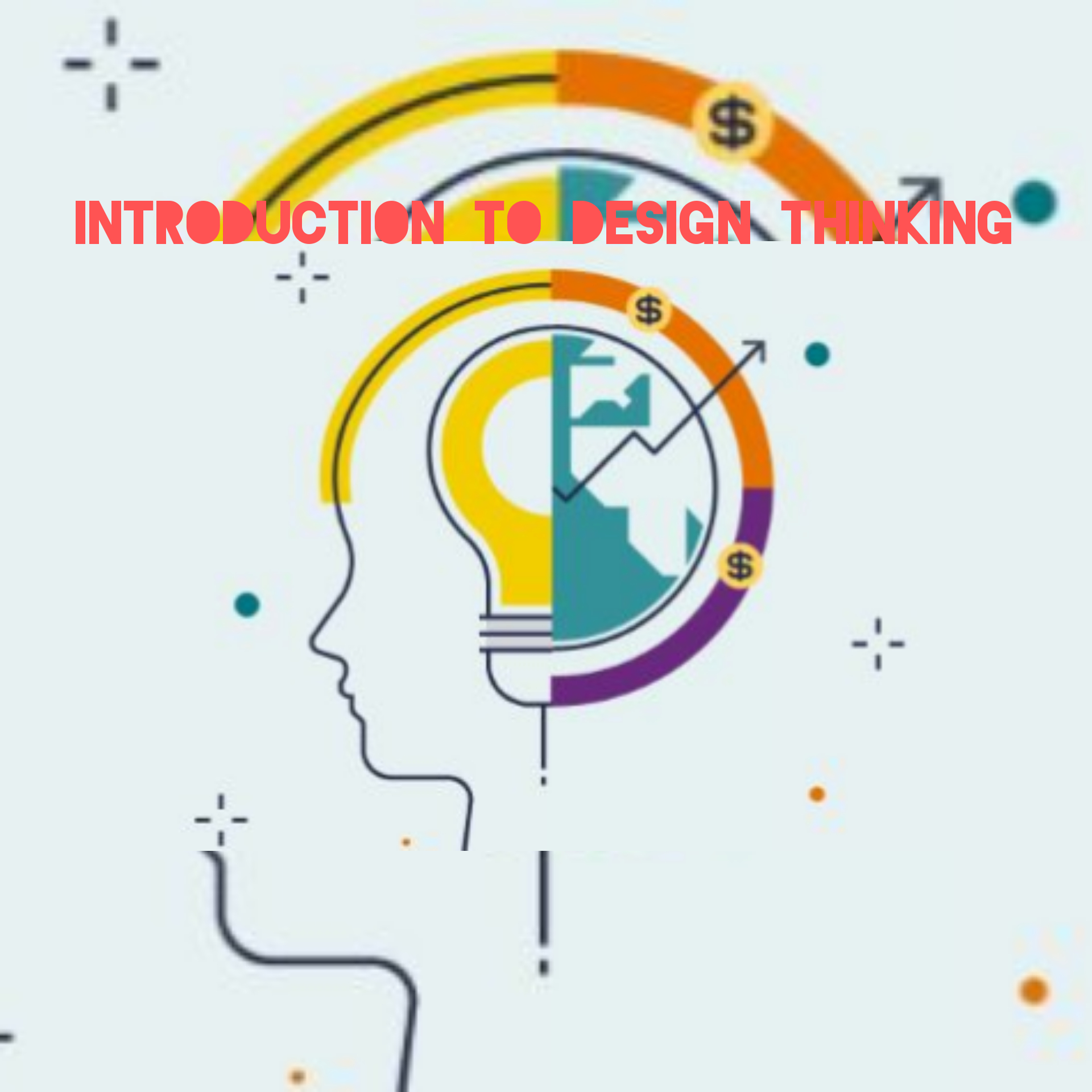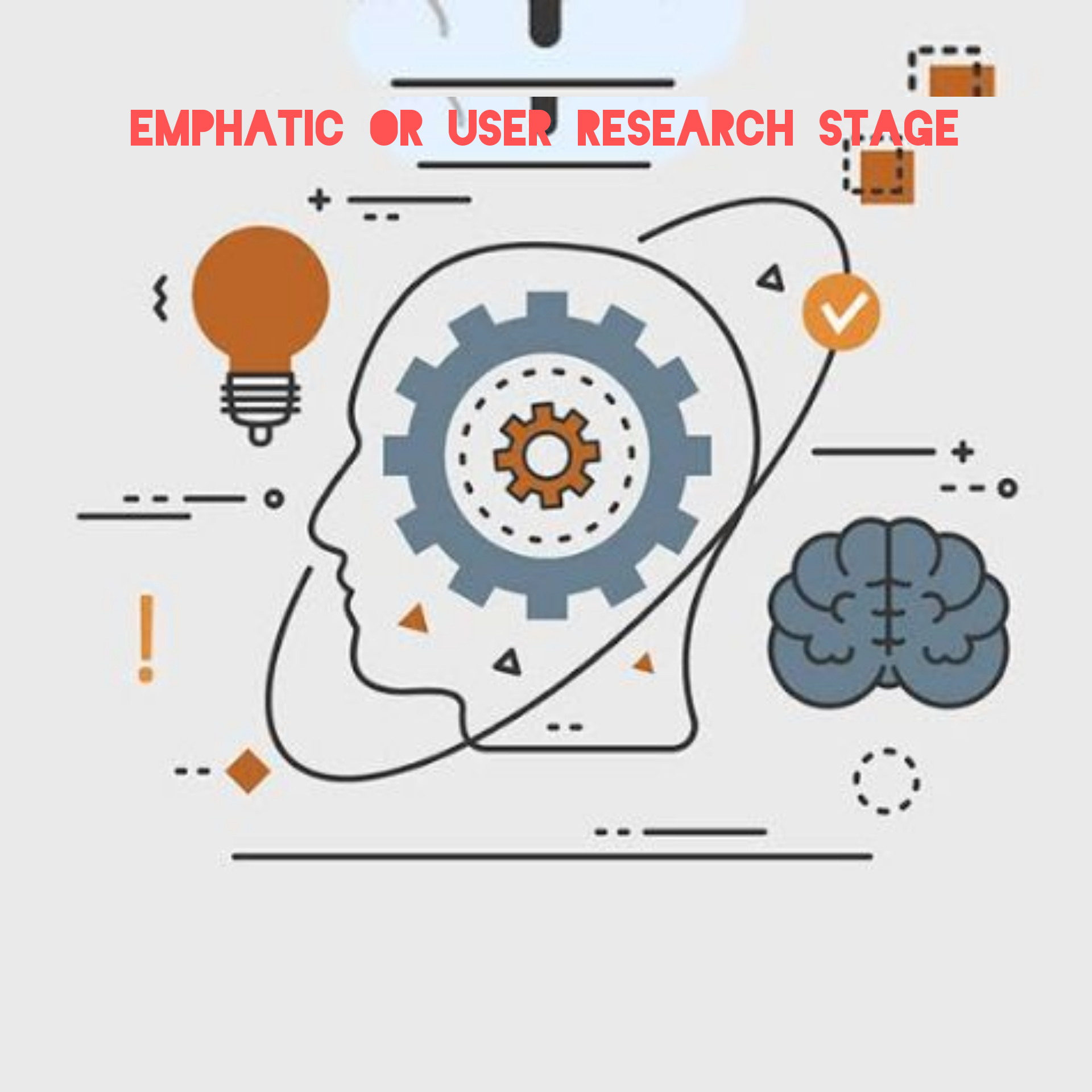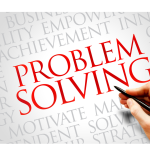Design thinking is a solution generation process. It is a type of solution creation methodology used in the development of software service products (ssp), and other technology-related projects. The design thinking process is used mostly by business analysts, project managers and business developers.
Besides, other products or project-related positions in different industrial sectors also use design thinking. The design thinking process does not just redefine the concept of building a product. It also creates a pathway that guarantees a successful launch of the product into the market.
Design thinking is emphatic thinking in the business world. It is trying to understand how your intended user thinks, feels, and also how they intend to use your product or service.
Interesting right? So join me below as I give you a solid beginners’ guide to the design thinking process. Shall we?
What is Design Thinking?
Design thinking from a layman’s view simply means thinking about the structure of a thing. How it is meant to work, who should use it, the problem it is supposed to solve, etc. The above definition is virtually not far from the truth. However, let us take a keen look at the precise definition of design thinking.
Read also: A Guide to The Metaverse Demystified for Nigerians
Typically, design thinking is a user-centred methodology for creating problem-solving solutions. It is a methodology that focuses on understanding what a user or consumer’s needs are and works towards solving that need through a step-by-step iterative process. Moreover, the design thinking process has been recorded to have birthed so many solutions providing products and services technologically.
Enjoying the ride? If that is a yes, then let’s plunge further into the design thinking process. However, if it is a no, then stick around a little bit more. I promise you might find something that will pique your interest.
Table of Contents
Introduction to The Design Thinking Process
A design thinking process is a step-by-step process of creating solutions that are focused on users or consumers and their needs. It is a methodology for problem-solving that involves thinking like a user or designing around the desires and needs of a user specifically.

A design thinking process is an iterative process.
Furthermore, a design thinking process promotes an environment free of preconceived assumptions about what we already know. How? It provides a well-articulated process that allows us to think outside the box. This process opens designers up to informed in-depth assumptions made solely on the concept of understanding.
Designers understand what the user or consumer wants, how they feel, how they interact with their product/service environment, and which user group needs the product or service the most. A design thinking process is also an iterative process. This is another medal to its cap.
It allows for continuous improvement of the product or service created through the solution. Say while you are testing your prototype with your defined user groups. You found out after the process that you didn’t quite get what the user or consumer wanted. Or perhaps you did get what they wanted but needed to add some final touches. You just go back and repeat the process. This is because you are always testing your prototype before launching.
A design thinking process always saves the time and cost of building a redundant product that nobody wants in the market. This is among the best methodology for product development, customer satisfaction and retention, strategic marketing, and also for promoting sales. As I earlier mentioned, the design thinking process is iterative and collaborative.
You and your team get to sit down and brainstorm ideas and solutions that best suit what the user or consumer wants. This is based on the different user research carried out. Moreover, it is a crucial step in the introduction to the design thinking process.
Most of the processes which will be listed below are time-consuming and must not be done serially. Different teams can be working on different stages of the process. The goal is to be able to understand the user completely and come up with something that truly solves their problem.
Now, let’s take a look at the components of design thinking and the five-stage design thinking process.
Components of Design Thinking
There are different components and elements of design thinking. It depends on the designer or the business analyst as the case may be. As mentioned above, the five-stage design thinking process can be carried out. However, the designer wants it as much as it produces optimal results.
Below are the two components of design thinking:
-
Software development methodology (Agile)
So I‘d say that one of the components of design thinking is the software development methodology used, which in this case is mostly Agile. Agile is used due to its iterative nature, and concept of building and testing a minimum viable product after the end of each sprint.
Read also: Artificial Intelligence in Business—The Good and Bad
-
Service or product research
Another component of design thinking is service or product research. This is a huge part of the design thinking process as it evaluates if there is even an available market for the proposed product/service. Without a market, you are design thinking in vain. This is because the core strength of design thinking is focusing on the user. So, when there is no user, who will you design things for then?
The Five-Stage Design Thinking Process
This is a widely accepted process for design thinking. As I earlier stressed, it can be carried out based on the nature and decision of the product designer/business analyst. The five-stage process is:
-
User research stage
The first step to providing a solution is to find the problem. In this context, it will be to find the need. This stage can also be called the emphatic stage, or the problem-finding stage.

The user research stage is aimed at discovering a problem and finding a solution to it.
Some actions involved in this stage of the design thinking process include:
• Engagement
These involve interview sessions with users, questionnaires, surveys, and extensive research. This is to get first-hand information and data about what the user thinks and how the user feels. This is because the users’ feedback will make it easier to determine what can be done to make the product or service better.
• Observation
These involve putting yourself in the design space and the user’s environment. Picture yourself as the user in your design thinking process. For instance, a client brought a job for your company to think up a solution to solve the problem of a farmer. The farmer complained about not seeing the returns of his produce after harvesting. After interviewing and carrying out surveys on yam consumers and other yam farmers, observing the user’s space or design space (the farm) might give clues the other activities did not pick up on.
It might be that the farmer’s land retains excess water or a case of rodent infestation. Just a problem that has to do with the farm, that can only be picked if you carry out this particular activity. Remember that digging out the cause of a problem solves the actual problem up to 80 per cent most of the time.
• Immersion
So, after engaging and observing your user and their environment, immerse yourself into the design. Try to think like them, feel like them and even see things like them. This is the most emphatic action under this design thinking process. It helps in truly understanding the user’s needs and sheds more light on the type of solution the user is looking for.
-
Define stage
After carrying out your user research, the next design thinking process is to determine your user group. This is the stage where the market or user audience is defined. Questions like, who are we building this solution for? Who is the target market? And whose point of view are we using for this design? These questions need to be answered.
This is also where you begin to build your business model canvas, point of view statements, and personas.
-
Ideation stage
This stage of the design thinking process is where lots and lots of solutions are generated for the design project. Remember that design thinking is iterative and collaborative? Well yes, the collaborative nature of the design thinking process comes into practice fully in this stage.
2-4 colleagues are ideal for a brainstorming session. The goal is to be objective and come up with lots of solutions to the design problem. This is because the purpose of design thinking is to leave your product at the apex of other products. Some ideation tips and tricks are listed below:
- One conversation at a time.
- Solutions must be focused on users’ needs.
- Visualization is important.
- Quantity is better.
- Don’t be judgmental.
- Crazy ideas are welcomed.
- Make it a fun session.
-
Prototype stage
This is where a prototype is built based on the solutions from the ideating session. The prototype tries to ask and answer questions based on the original problems surrounding the design.
Besides, the designer also tries to test some of the solutions for the design problem. The designer also predicts the response of would-be users if the product or service were to be launched into the market.
A scene or environment where the prototype will be put to test is chosen. A prop, which is used to figure out what the user is interested in e.g. mobile app. The roles of the user and conversationalist are also some of the activities involved in this design thinking process stage.
-
Testing stage
The testing stage is the last stage of the design thinking process. It involves the testing of the prototype that has been decided for the design problem. Here is where the prototype is reintroduced back again to the user for another round of evaluation and user research.
Meanwhile, the feedback gotten from the test is invested back into the product. This might result in going back to either add some new changes to the prototype or re-create a new prototype together. Even if everything was gotten right from the user’s point of view, the process will still be iterated for continual improvement of the product.
Having gone through the above stages, you should now have a solid idea of what the design thinking is and how it works. Next, let’s explore a little about the elements and purposes of design thinking.
Read also: Why UI cannot survive without User research
Elements of Design Thinking
-
“How might we” statements
This is among the most vital elements of design thinking. “How might we” statements are questions used in ideating sessions on different solutions to a design problem.
-
Personas
These are personalities and characteristics given to users in a selected user group. The designer gives life to the different user needs. This information is gotten from the user research done during the first stages of the design thinking process.
Here, the designer creates personalities for the different desires and needs flagged during the research. There is no point in design thinking without building personas. They are the number one element of design thinking followed by the “how might we” questions.
-
Point of view statements (POV)
These are statements born out of the perception of the designer. They are similar to the persona only that the personas represent an individual in real-time. While the POV statement is the designer making assumptions based on the data gotten from an interview session.
So, one is real-time, while the other is an assumption. They both help the designer understand the need and desires of the user better.
-
Natural observation
This entails the designers immersing themselves into the users’ environment without engaging in any form of activity. Natural observation is another type of user research used when a designer just wants to observe the user in their environment.
-
Evaluation
This is the analysis and evaluation of all qualitative and quantitative data collected during user research. Evaluation is another strong element of design thinking. This is because a designer cannot create a design solution without understanding the user and its needs. Evaluation helps to uncover this.
Purposes of Design Thinking
- One of the major purposes of design thinking is to help in breaking down problems, whether in business or technology.
- Design thinking allows for outside-the-box thinking. This helps organizations proffer long-lasting solutions to different business and technology-related problems.
- Organizations deploy the use of design thinking for efficient research and the creation of different prototypes within a short time. Thus, the design thinking process saves time.
- Design thinking explores “the problem” in-depth as against other solution methodologies.
- Design thinking breeds an environment free of assumptions. It promotes a highly innovative atmosphere for birthing solutions and ideas.
- Design thinking breaks down complex problems into simple solvable needs as sometimes user’s/consumers don’t even know what they want.
- More importantly, design thinking creates a solution that satisfies a concrete user’s need and works to solve a real-life problem.
Read also: How to Grow Your Business to Dominate Your Industry
Finally, we are at the end of this journey! How was the A-Z of this beginner’s guide to design thinking? You can share your thoughts by sliding into our WhatsApp community.
Conclusion
Keep in mind that the design thinking process is not just for big organizations or product managers and designers. It is also for a chef, an artist, a painter, and even a writer like me.
You can incorporate the design thinking process into everyday life. This enables you to understand people well, business models, business partners, and your customers. Such that, you will hurt nobody. Therefore, design thinking is a lifestyle as well as a skill set.
I hope this piece has opened up your mind to some take-home ideas even as a beginner. Now that you know what the design thinking process is all about. You can subscribe to our newsletter to keep track of more great insights. Good luck!
About Author
- Content and technical writer with seasoned experience in storytelling, user research, client satisfaction, and customer relationship management.
Latest entries
 Business InsightsMarch 2, 2023Agile Project Management: Why it is Good for Your Business
Business InsightsMarch 2, 2023Agile Project Management: Why it is Good for Your Business CareerJanuary 15, 2023A Guide to Problem-solving in the Workplace
CareerJanuary 15, 2023A Guide to Problem-solving in the Workplace Business InsightsDecember 10, 2022How to Deliver Excellent Customer Service in Your Business
Business InsightsDecember 10, 2022How to Deliver Excellent Customer Service in Your Business Business InsightsNovember 11, 2022How to Write a Business Report: Definition, Format, and Samples
Business InsightsNovember 11, 2022How to Write a Business Report: Definition, Format, and Samples

